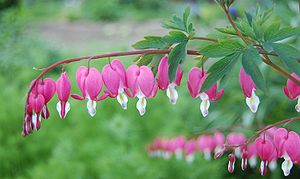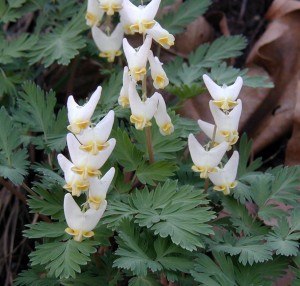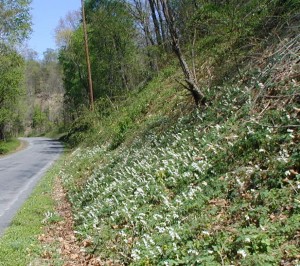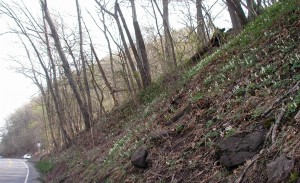Spring Ephemerals have had my attention for the past few weeks. I truly enjoy watching Spring take hold in the form of spying on my flowery friends. As the various plants arise from their winter sleep they sprout and put forth their beautiful blossoms for all to see.
The Spring ephemeral flowers by their very nature are fleeting in appearance. You can see them one day and be glad that you did for the next day they could be gone until the next year. Part of my delight stems from the fact that I know most people will never go to the woods to see these beauties. Can I possibly derive pleasure from knowing that people will miss out on these beautiful displays? Not really, but I do feel privileged somehow.
Instead of keeping all the fun to myself, I’ll keep posting pictures here to share with everyone. Soon, I’ll be offering an ebook or e-course on Spring Ephemerals, so stay tuned!
Some years I’ve totally missed out on seeing some favorite flowers because one thing or another kept me from taking time to hunt them. This year I’ve vowed to get to the woods to see my favorites, which I have been lucky to do so far, and to find a few new friends.
Activities that help us to appreciate nature – like looking for spring ephemeral flowers – would make for great family outings. If you’re trying to be “green-minded”, gather your kids or friends and take your next activity to a state park or forest where you can picnic and have some inexpensive fun. There are all sorts of things to do and observe that don’t cost more than your transportation of getting there. Here’s a few ideas to get started –
- Set a goal to find five new flowering friends each season.
- Walk or hike in the woods or on a nearby trail and observe nature.
- Find a favorite flowering plant and observe it through all four seasons.
- Make a photo-collage or screen-saver of your favorite flowers and leaves.
- Find wild flowers that are red, white and blue, or your favorite colors.
- Locate a berry vine and watch the flowers develop into yummy blackberries or black raspberries. Then, make jelly!
- Get outside and just enjoy the fresh air.
Some of my old favorite spring ephemeral flowers include Round-Leaved Hepatica, Spring Beauty, Trout Lily, Bloodroot and Dutchman’s Breeches.
Spring flowers that I hadn’t before seen or identified include Early Saxifrage, Bluets, and, no doubt, there will be more to be appreciated in the years to come.
Spring ephemerals are just about done flowering for 2010. The trees are at least 50% with leaves developed, so the time for spring ephemeral flowers is almost over. Time for one more walk in the woods!






![Reblog this post [with Zemanta]](http://img.zemanta.com/reblog_e.png?x-id=eb8f2f52-274d-4047-8249-94835030b52c)